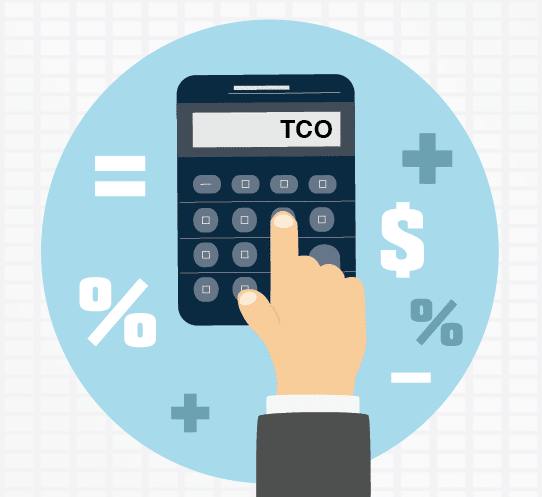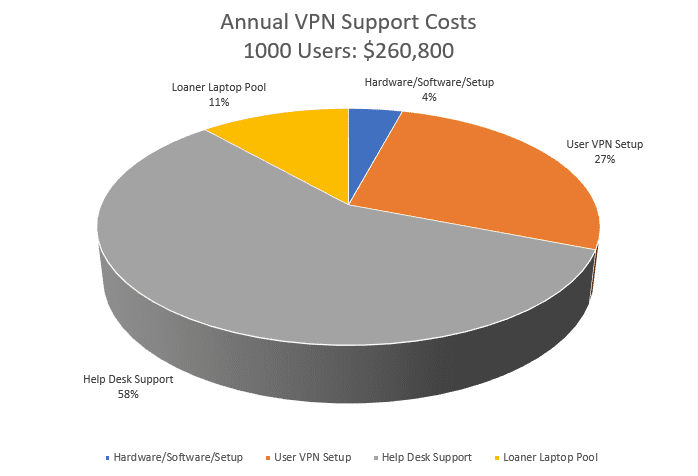
Contents
Total Cost of Ownership
Businesses of all types utilize a VPN software solution to provide remote access to their employees. How do we quantify the true Total Cost of Ownership (TCO) when supporting VPN software? Why is TCO Important?
Gartner, Inc. defines TCO as the total cost of using and maintaining an IT investment over time. TCO calculations include a combination of direct costs (hardware, software acquisition, management, and support) and indirect costs (end-user training and downtime). TCO is often overlooked and unbudgeted, presenting an incomplete projection of overall IT costs.
Most organizations look at their direct costs and setup labor only at the time of purchase. However, research shows that a system’s software & hardware costs typically represent less than 20% of its TCO, with ongoing technical support, maintenance, and labor costs accounting for the remaining 80%. These ongoing VPN Software support costs represent the largest piece of the TCO pie and should, therefore, warrant the highest levels of scrutiny.
Consider the following chart that demonstrates the potential annual costs of supporting VPN clients for 1000 users:

Direct VPN Costs
Hardware & Software Costs
An organization of 1000 employees can expect to pay between $6,000-$8,000 for a dedicated VPN device with a hot spare + Annual Maintenance.
Setup Costs
For large enterprises, VPN services can take up to 40 Hours for procurement, basic setup, and deployment.
Ongoing VPN Maintenance
VPN Devices require continual updating and refinement – expect ongoing maintenance, after-hours updating, and security patching. As noted by Network Computing Magazine – “Setting up, configuring, and managing access for a VPN takes a significant amount of time and can be an immense drain on IT resources”.
User Support
Plan on providing technical support time to set up VPN Software on end-user devices at a minimum of 30-60 minutes per device with basic training for initial setup and an average of 15 minutes per user per month for ongoing support.
Two Factor
Add costs for supporting various two-factor solutions – some solutions allow the use of third-party services (at an additional cost), requiring additional configuration while others such as Microsoft VPN can utilize machine certificates which require additional support hours to manage and set up.
Indirect Costs
Potential Compromises
By default, an end user’s Windows network is routed through the office VPN network. As a result, this leaves the internal network open to Malware such as Crypto Locker and exposes the network to cybersecurity threats.
Connectivity Issues
IPsec-type VPNs are blocked at many locations resulting in calls to the help desk to resolve connectivity issues and results in lost employee productivity.
Potential File Corruption
Minor network fluctuations can disconnect the VPN clients potentially corrupting open files resulting in support costs for restores and lost work.
Additional Equipment
The IT Department will need to maintain an additional fleet of corporate laptops with a VPN pre-configured for each potential remote user.
Browser-Based VPN Alternatives
MyWorkDrive acts as the perfect VPN Alternative solution
MyWorkDrive’s browser-based file access software helps companies reduce their VPN support costs while reducing their security exposure risks. Users simply open a browser to access their work files using their existing Windows Active Directory credentials. Once logged in they can access company shares, home drives and edit/view documents online. For security, all MyWorkDrive clients also support DUO Two Factor authentication.
Even if only half of a company’s employees are directed to use MyWorkDrive’s Browser-Based File Access client they can achieve annual savings of up to 50% while improving security.
